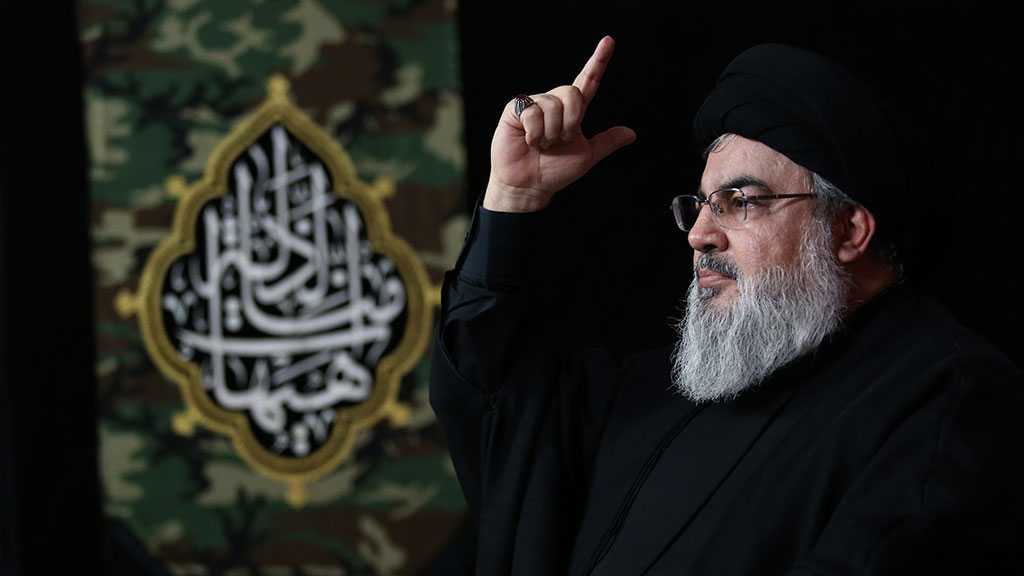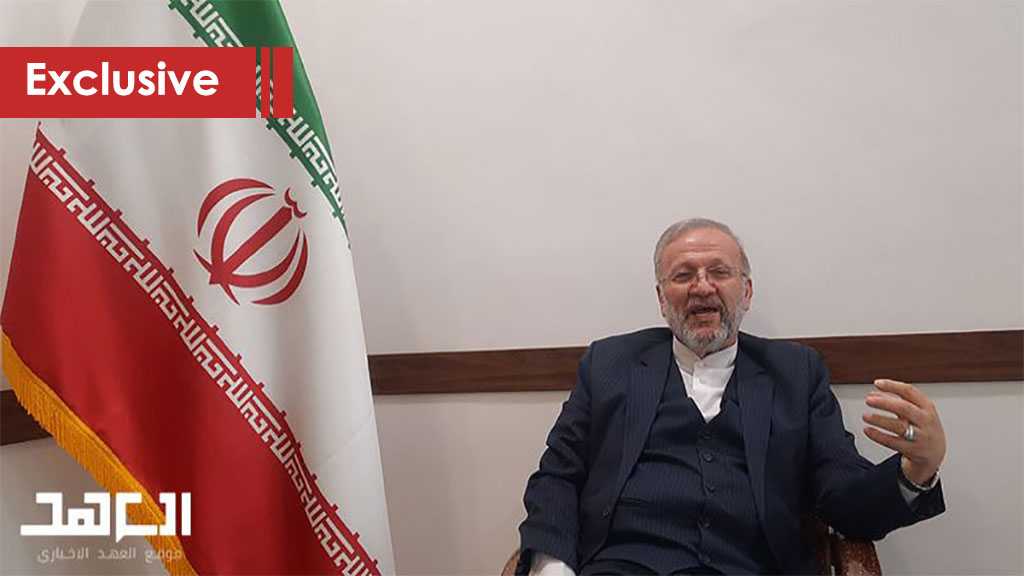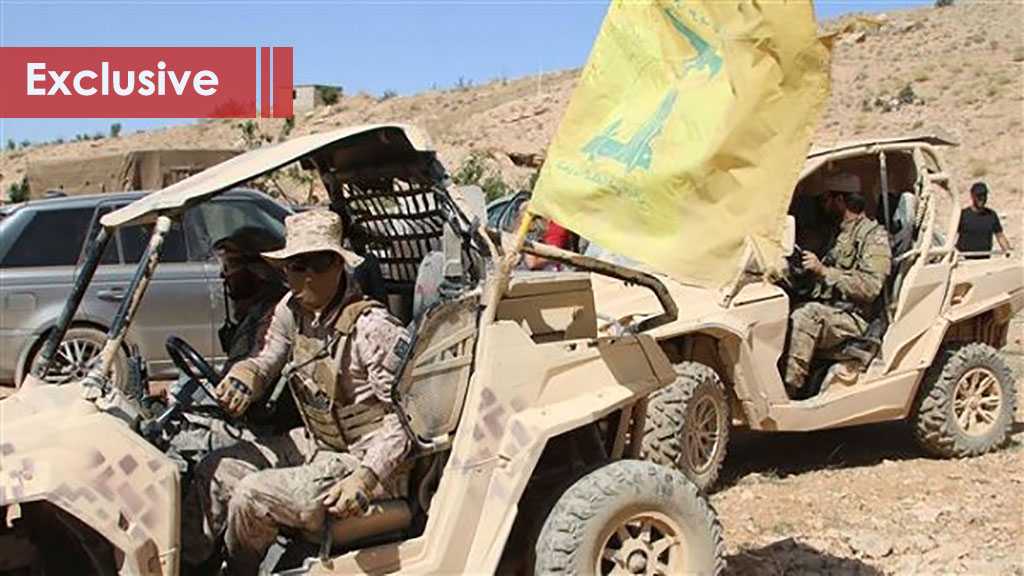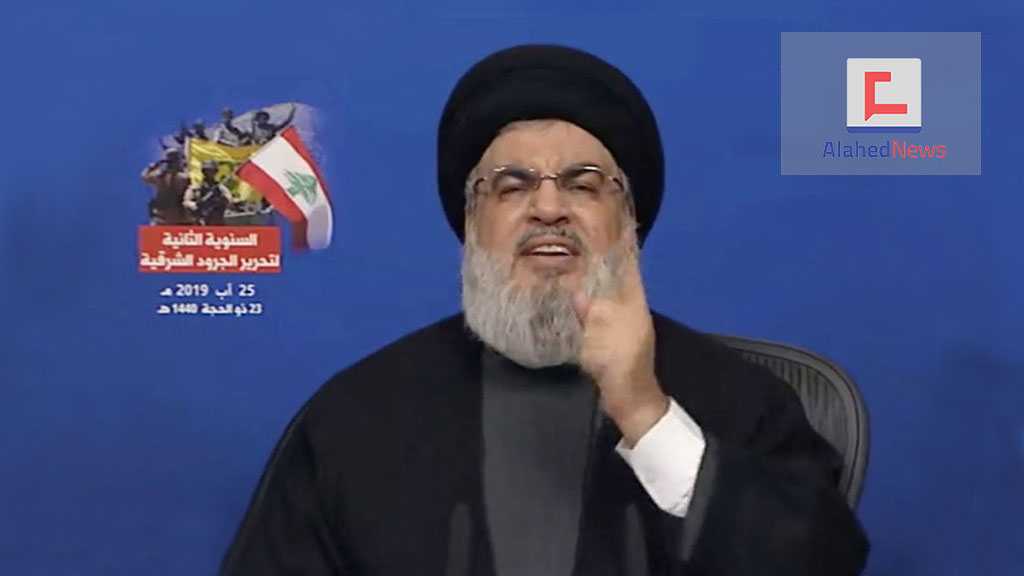
Lebanon’s 2nd Liberation: The Islamic Resistance Tells Al-Ahed the Whole Story – Part I
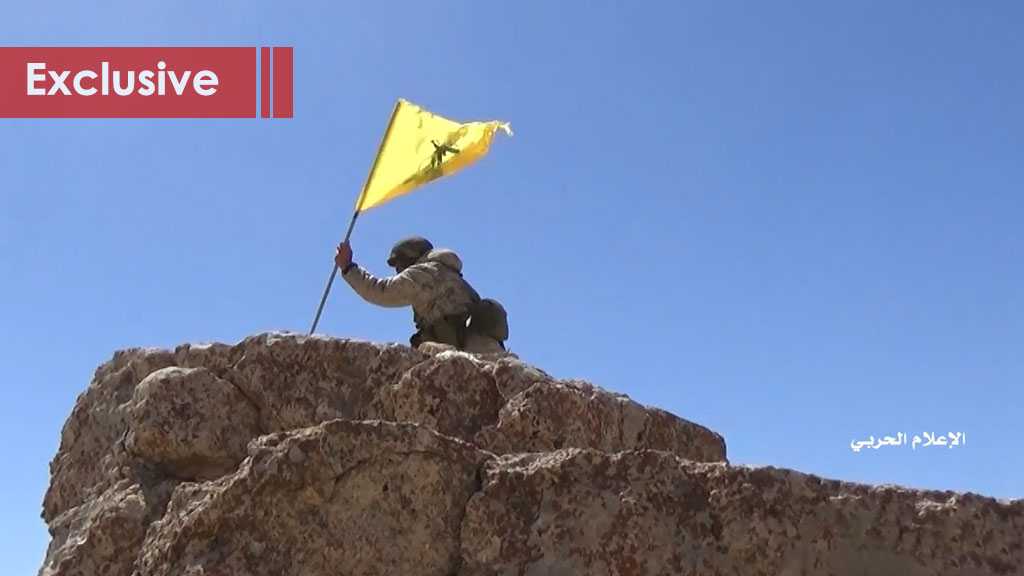
Maysaa Moukaddem
On the second anniversary of the battle to liberate Lebanon’s Eastern Mountain Range from terrorists, the Islamic Resistance, for the first time, tells the full version of events to Al-Ahed News website. This includes military and field details.
It all began in 2012 starting from Tell Mando to Al-Qusayr to the Jaroud. Al-Ahed will publish the story successively accompanied by special videos and maps in cooperation with the media wing of the Islamic Resistance.
Below is the first part. It begins by explaining the importance of the battle, the terrorists’ chief project and how the Islamic Resistance destroyed the militant scheme to reach the sea and isolate the Bekaa from Homs.
* The beginning of the story: Homs and the importance of the governorate
The first point: the Governorate of Homs is located east of the governorates of Deir ez-Zor and Raqqa and west of Tartus Governorate. As such, it is located between six governorates. Homs is the heart of Syria.
There is an additional factor that makes Homs Governorate valuable –its external dimension. Homs is connected to Iraq’s desert, which is connected to Iran. Homs is also linked to the Lebanese side, more specifically to the northern part of the country. It is also linked to Iraq from the Badiya and Palmyra while its territory inside Syria stretches to Jordan and then Saudi Arabia.
The second point: The importance of Homs stems from its economic value. It is a rich governorate with extraordinary natural resources, including oil fields, gas fields, phosphate plants, etc. Homs, therefore, is one of the most important Syrian governorates rich in vast natural resources.
When it comes to northern Lebanon, Tartus Governorate is the area in the middle between Homs Governorate and the sea. Meanwhile, Homs Governorate is connected to northern Lebanon through Wadi Khaled. There are 15 to 20 kilometers between them. The one who has full control of Homs Governorate controls the whole area. Meanwhile, the part of Homs Governorate near al-Qusayr sits in the middle and can serve as a connection to the Bekaa.
From a military stand point, Homs Governorate is characterized by numerous facilities, including several airports: Palmyra Airport, T-4 Airbase, Shayrat Airbase (one of the most important air bases in the governorate), as well as strategic storages for the Syrian Army. The Syrian army in Homs had two main strategic storages, Palmyra and Maheen.
* The Importance of al-Qusayr and the Time Factor
To understand the importance of the battle of al-Qusayr, time must be taken as a key factor. From 2012 until 2013, the main organization posing as a supply line for the so-called Syrian Revolution was the Farouq Brigades. The group was dealt a major blow during the Battle of al-Qusayr. Its main project of taking al-Qusayr as a starting point had failed.
Why was al-Qusayr chosen to play this role? For a number of reasons, including easy access to al-Qusayr by making use of the Arsal region and the mountains in addition to the smuggling operations coming from the north. We all remember the "Lutfullah-1" and "Lutfullah-2" boats. These were the smuggling operations that have been uncovered. But no one knows how many other Lutfullah ships had gone through in secret.
Al-Qusayr was the first logistical base of the Syrian Revolution. Foreign militants came to Syria via al-Qusayr. It was the distribution point for foreigners, ammunition and weapons. The capabilities and material support for all armed groups passed from al-Qusayr. From there everything was being distributed.
On the Lebanese side, there was a political and security factor that facilitated all these movements to al-Qusayr at the time. Al-Qusayr emerged as a state from which terrorist groups departed. Al-Qusayr was one of the most important distribution lines to Qalamoun, even during the problems that took place in Bab Amro.
Thus, al-Qusayr was the main logistical base for the so-called Syrian Revolution. The orders from the leadership of the so-called Syrian Revolution also originated from al-Qusayr. Although it is located in the southwestern corner of Homs Governorate, it was "open" to the Syrian desert, offering the possibility of extending towards the governorates of Raqqa and Deir ez-Zor even Aleppo and the whole region.
* Tell Mando: The Key
One of the striking things that we will talk about during the explanation of military operations is that while the Mujahideen were fighting the militants in the battle of al-Qusayr, gunmen received reinforcements and entered the heart of al-Qusayr from Aleppo, Raqqa and Deir ez-Zor. These supporting forces entered al-Qusayr and fought during the battle. Among them were Abdul Jabbar al-Aqidi, who was one of the most prominent leaders of the Syrian Revolution at its onset, and Abdul Qader Saleh Haj Mari, the number one leader of the Syrian Revolution formations.
Obviously, the hostile axis relied heavily on al-Qusayr. It also used it as a lifeline for other combat outposts. After the enemy had taken full control of Qusayr and the villages west of the river (the resistance had prepared a defensive line for the villages), it sought to connect with northern Lebanon. To achieve this objective, it took control of Tell Mando, a highly important hill. Tell Mando stretches approximately 400 meters from north to south and its width is approximately 300 meters from east to west. It rises seventy meters above its circumference. Atop this important hill is a shrine and some ruins.
One of the objectives the terrorists had was to reach the sea and connect with the north of Lebanon. This removes the obstacles they face while working from inside Lebanon. It is true they had security and political facilities in Lebanon, but there is a difference between facilitation and the axis having this extension opened.
In March 2013, the terrorists were finalizing their project. They took control of Tell Mando, and three villages remained: Al-Houz, Modan and Al-Qurniyah. What would this connection with the Lebanese border provide for the militants?
* Sounding the Alarm
It provides them with a connection to the sea, and then breaks the link between the Bekaa and Homs. In other words, the al-Sunoun-al-Qurniyah line would be cut off. It was the only line operating at that time because the terrorists had taken control of the al-Qusayr area. In addition, crossings were made through side roads to Al-Aqrabiya then al-Qurniyah reaching to Sunoun and then the Homs-Tartus Highway. Technically, the capture of Tell Mando by the gunmen sounded the alarm.
We were defending the Al-Aqrabiya or Western Bowaida all the way up to Tell Mando. The Tell Mando area was in the hands of the militants from the east, and from the west there were some formations of the Syrian army, such as the Dabaa Airbase. Back then, it was besieged. The rest of the areas were under militant control except for one area located east of the river. This area was the Christian village of Riblah and some of the surrounding roads. The Syrian army was securing the road from Riblah to Jisr al-Mashtal.
The Syrian army deployed along some of the points in the eastern outskirts of al-Qusayr. The army took the al-Barghouth checkpoint road to reach these points. In practice, the entire city was under the control of the terrorists. At that point, Hezbollah's decided to defend the villages. The terrorists were trying to launch attacks on these villages. During these operations, the resistance was on the defensive while launching special operations when necessary in some locations.
The militant takeover of Tell Mando was a wake-up call. At this stage, it was decided that our presence in Syria, in Homs or in Aleppo or even in Sayyida Zeinab (PBUH), was still in the defense of the sanctities and some villages, including Bosra al-Sham, Nubl and al-Zahra as well as Kefraya and Foua.
But in 2013, after the terrorists took control of the strategic Tell Mando hill, we reoriented the general direction of the battle.
* The Leadership’s Decision: Regaining Tell Mando
After the terrorists took control of the hill, the Syrian army carried out several attempts to recapture it, but to no avail. The battle was tough. Several soldiers were martyred there. The hill was a barrier surrounded by the river. There were many natural obstacles in front of it. The attacking force had to cross a 21-meter-wide river of running water while the enemy was stationed at a height of 70 meters.
When the leadership decided that it was time for the Islamic Resistance to attack the hill (15 days after the terrorists took control of it in March 2013), reconnaissance operations began. Giving up the hill to the militants was not an option for the resistance. The militants were only nine kilometers away from Wadi Khaled and the sea.
* The Instructions of the Secretary General: Attack Only as Far as the Hill
The decision to carry out the Tell Mando operation was taken. The leadership’s instructions were decisive. The Secretary General, His Eminence Sayyed Hassan Nasrallah, gave instructions that the attack should focus only as far as the hill. One of the problems we faced with respect to the restrictions imposed by the Secretary General was not being able to engage in offensive work. The point was very sensitive. The instructions were to keep the operation under the title “Attacking in the Framework of Defending”. Our limit was the hill. We faced a problem with some houses located on the hillside near the mill. The orders were not to reach them because they are outside the hilltop. Upon implementation, we made several attempts.
On the first attempt as we crossed the river, one of the brothers was martyred. One of the most important problems was how would we cross the river, which is 70 meters away from the hill, while the militants had the higher ground advantage. This will also lead to an additional problem as we climb to the semi-sandy and very steep hill.
Our work was done at night, and it was very cold. The Mujahideen in the field were steadfast and determined. In the second attempt, the brothers crossed the river. We had taken into account that the militants would not give up and would try to recover their positions. The Mujahideen advanced to form an actual infantry; military men in the face of tanks, armor and other capabilities. The river could only be crossed at one point. We crossed the river from one point and the forces separated from each other.
Here, we are talking about a 21-meter-wide river. One group of the Mujahideen secured the eastern side.
Another group secured the western side. The main formation opened the gap and progressed upwards. The formation was very small, consisting of 3 infantry groups tasked with ascending and capturing. There were also fire support formations, which were dispersed.
The timing of the operation was six o'clock in the morning. At that time, thick fog appeared and obstructed the visibility of the fire support group that were aiding before the brothers initiated their attack. That is the reason why the operation was late. The brothers were soaked with water after crossing the river. It was very cold. At 8:15, permission was given to attack. The infantry formations advanced. Vision became clearer. As the infantry entered, fortifications and bunkers were destroyed. The engagement unfolded.
Many militants were killed and the rest retreated. We kept the hill area. Here, what we were expecting came true: the reaction.
* Requesting Permission to Expand in order to Protect the Hill
At this stage in particular, we remembered the leadership’s command not to move on the houses near the hill. So we merely observed without moving towards those areas. Meanwhile, the militants tried to take advantage of it. They mobilized. Here, we are talking about tactics. The enemy mobilized 400 fighters and attacked us in a formation shaped like the Arabic number 8 (8). Militants climbed the hill in formations of 50. Close-quarter confrontations followed. The battle lasted from 12 in the afternoon until dawn. The attack was repeated in two additional stages: the first stage with three formations and the second stage with eight formations. The decision was made that in order to keep the hill, it was necessary to expand a little. So we liberated the areas near the hill. In the process, a number of resistance fighters were martyred.
The terrorists continued attacking. Then we asked the leadership permission to expand further. We could not defend Tell Mando from the hill and its surroundings. We needed to defend the hill from outside Tell Mando. At this stage, the decision came from the leadership. We received permission to liberate the village of Kadesh (a small village) as well as the outskirts of the villages of Mansourieh and Asaadiya. Thus, the offensive began nearly a week after our attack on the hill.
Based on the fact that the depth of the attack would be about 300 meters, a force of this magnitude was mobilized. The militants threw in their elite forces for the operations to retake the hill. Around 50 of the leaders of major groups in the area, such as Omar Rahil (he was a commander of an axis), were killed. At the start of the attack at dawn, we had three axes: one to secure Tell Mando and the village of Kadesh, and two other key axes.
* Destroying the Two Projects: Connecting with the North and Isolating the Bekaa from Homs
On the first day, the axis tasked with protecting Kadesh reached its primary target and advanced toward al-Radwaniyah, so we secured this part. We had deployed a force of 300 Mujahideen. (Hezbollah's secretary general was very keen on the human element.) The area was opened in front of us, so we had to advance. The enemy had exhausted its forces, so we continued in two directions.
We could not leave the area without clearing it from militants. In this battle, two axes were opened before us. One axis was tasked with reaching al-Saqmaniyah. This was achieved in the same day. Another axis continued towards al-Radwaniyah. Al-Radwaniyah was liberated. We came under militant attacked. The decision was made for us to continue.
At the end of the first day, we liberated four villages, al-Radwaniya, Burhaniyah, Asaadiya, Mansourieh and Kadesh. We connected the four with another village called Saqmaniyah. The objective on the first day was to liberate one village. Instead we freed five villages with the same attacking force.
On the second day, an enemy force launched an operation along the Ain al-Tannour point and attempted to attack us on the al-Burhaniyah axis. Allah the Almighty supported the brothers in foiling this attack. A force entered from al-Saqmaniyah area towards al-Othmaniyah and Beit Rahil.
By the end of the second day, we had taken control of a group of villages: Beit Rahil, al-Othmaniyah, Sarjah, Al-mouh, Ein al-Samak, Ein al-Qantara, al-Jarrousiya and al-Khalidiya. We stopped at a line called Ein al-Samak, al-Khalidiya, al-Jarrousiya.
We were supposed to attack from east to west. But according to the tests on the field, we attacked from north to south. We had an attack plan from the axis. We intended to reach al-Assi River. We had to liberate this village.
At the beginning of the third day, we launched an additional axis from the east to the west towards the Abu Houri area and continued the operation. By the end of the third day, we had liberated approximately 22 villages. We achieved the connection from the west of the river to the east of the river to Ribla. This means that the forces had taken control of the area west of the al-Assi River, an area of 200 km2. With this operation, we achieved the ultimate purpose of the battle (of course, the leadership intervened by giving instructions to continue and expand the operation. So we continued).
One of the main reasons for this complete collapse of the insurgents is the speed of the Mujahideen, horror in the hearts of the militants, and the enemy losing its elite forces in the first attempt to retake the hill. The most important factor is the divine victory and divine care.
* The Achievement:
At this stage, the Islamic Resistance ended the battle west of the river by destroying the project intended to connect with northern Lebanon and the project to isolate the Bekaa from Homs.
* In the Next Episode: This is the Story of Al-Qusayr
Comments
